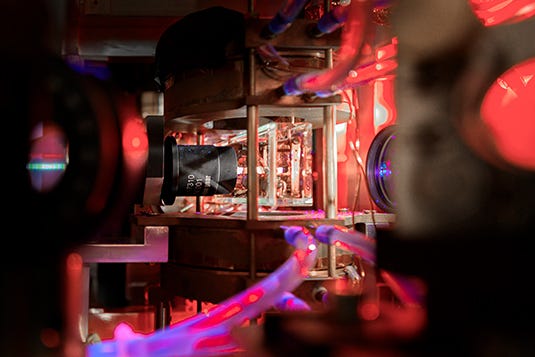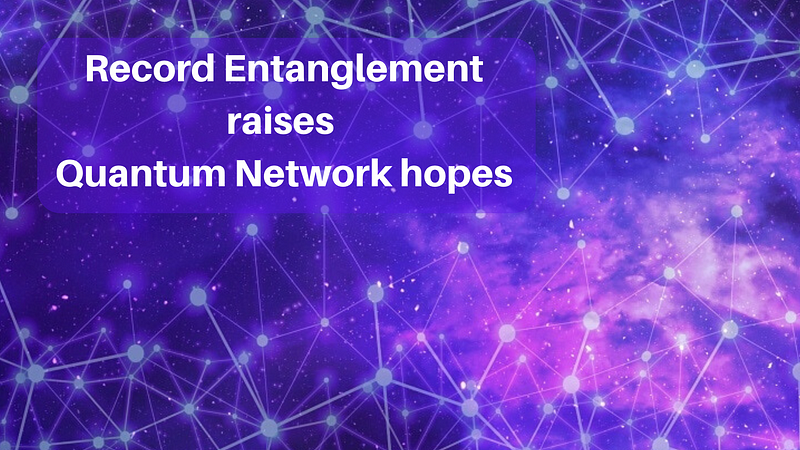A Breakthrough in Quantum Entanglement Over 20km Fiber Optics
Written on
Chapter 1: Record-Breaking Quantum Entanglement
Recent advancements in quantum physics have led to a remarkable achievement: researchers have successfully demonstrated entanglement between an atom and a photon over a distance of 20 kilometers using fiber optic cable. This milestone not only sets a new world record but also brings us closer to realizing practical quantum networks.
Physicists from Ludwig-Maximilians-Universität (LMU) in Munich, in collaboration with the University of Saarland in Saarbrücken, have shown that the entangled state of an atom and photon can traverse an optical fiber, surpassing the previous record of 700 meters. "This experiment is a significant breakthrough, as it confirms that quantum information can be transmitted over long distances with minimal loss," states Weinfurter. "Consequently, our findings represent an essential step toward the future development of quantum networks."

In this experiment, a single rubidium atom was entangled with a photon, and researchers detected the entangled state after it traveled through a 20-km coil of fiber optic cable. The research findings have been published in the journal Physical Review Letters.
Section 1.1: Understanding Quantum Entanglement
Entanglement, often described by Einstein as “spooky action at a distance,” occurs when a quantum state is shared by two or more particles. When a measurement is made on one particle, the other particle’s state is instantly affected, regardless of the distance separating them. This phenomenon poses challenges to the principles of special relativity, which state that nothing can travel faster than light. Despite Einstein's concerns about the completeness of quantum mechanics, a century of experiments has validated the existence and utility of entanglement.
Subsection 1.1.1: Implications for Quantum Computing
Entanglement, regardless of its ‘spooky’ reputation, plays a crucial role in the evolution of quantum computing and communication. However, conducting experiments to harness this phenomenon presents significant difficulties.

One of the primary challenges faced by researchers is the behavior of the rubidium atom. After being excited, these atoms emit photons in the near-infrared spectrum, which are quickly absorbed by standard glass optical fibers. "In optical fibers made of glass, light at 780 nanometers is rapidly absorbed," Weinfurter explains. "Traditional telecommunications networks utilize wavelengths around 1550 nanometers to minimize loss during transmission."
To address this limitation, team member Matthias Bock developed a 'quantum frequency converter' to shift the emitted photons' wavelength from 780 nm to 1522 nm. This conversion was fraught with challenges, particularly ensuring that the entangled state remained intact throughout the process.
"By employing this efficient converter, we managed to preserve the entangled state over much longer distances at telecommunications wavelengths, thus facilitating the transmission of quantum information," concludes Weinfurter.
Chapter 2: Future Directions in Quantum Networking
The next phase in advancing quantum networks involves entangling photons emitted by a second atom. The researchers believe this will allow them to create entanglement between two atoms across extensive telecommunications fibers.
Future experiments will require stringent laboratory conditions since the properties of glass fiber cables can fluctuate with temperature and mechanical stress. Once they complete their next series of controlled experiments, the team intends to explore real-world applications by adding additional nodes, thereby expanding the quantum network.
The journey toward fully operational quantum networks is a gradual process, progressing one step at a time.
In the video titled "From a Physics Experiment to a Quantum Network System," Stephanie Wehner delves into the intricacies of quantum network systems and their foundational physics.
Chris Anderson discusses "Building a quantum internet with photons and electron spins," outlining innovative approaches to creating a functional quantum internet.